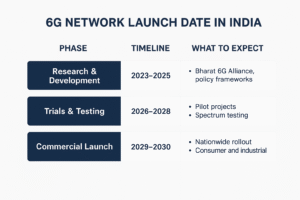The Role of Technology in Climate Change Solutions
Climate change is no longer a distant threat—it’s a present-day challenge with global consequences. From rising sea levels and extreme weather to ecological disruption, the effects are clear. But as the crisis accelerates, so does innovation. Technology is playing a pivotal role in helping humanity adapt to, mitigate, and potentially reverse the impacts of climate change.
In this article, we explore how emerging technologies are addressing environmental issues and building a more sustainable future.
🌍 Understanding the Climate Crisis
Climate change stems from the increased concentration of greenhouse gases (GHGs) like carbon dioxide (CO₂) and methane in the atmosphere—mostly due to human activity.
Primary Contributors:
- Fossil fuel combustion (coal, oil, natural gas)
- Deforestation and land-use changes
- Industrial agriculture and livestock
- Energy-inefficient infrastructure
To limit global warming to below 1.5°C, we must cut global emissions by nearly 50% by 2030—a daunting task. That’s where technology steps in.
🔧 How Technology Is Tackling Climate Change
From renewable energy systems to AI-driven environmental monitoring, technology offers powerful solutions across multiple sectors.
1. Clean Energy Innovations
Transitioning away from fossil fuels is a cornerstone of climate action.
🔋 Key Technologies:
- Solar PV and Concentrated Solar Power (CSP): More efficient and affordable than ever
- Wind Power: Offshore wind farms are scaling rapidly
- Battery Storage: Grid-scale lithium-ion and emerging solid-state tech
- Green Hydrogen: Produced using renewable energy, vital for heavy industry
Notable Projects:
- Tesla Megapack installations for grid storage
- Heliogen’s solar-powered industrial heat systems
- Germany’s hydrogen trains replacing diesel rail
2. Carbon Capture and Storage (CCS)
CCS technologies capture CO₂ emissions at their source or from the atmosphere and store or reuse them.
Types of Carbon Capture:
- Point-source capture: From factories and power plants
- Direct Air Capture (DAC): Removes CO₂ directly from the atmosphere
Examples:
- Climeworks: Running the world’s largest DAC plant in Iceland
- CarbonCure: Injects CO₂ into concrete during manufacturing
3. Smart Agriculture & Food Tech
Agriculture is responsible for nearly 25% of global GHG emissions. Tech-driven farming practices can reduce that footprint.
Tools in Use:
- Precision agriculture: Sensors and drones optimize water and fertilizer use
- Vertical farming: Grows food in stacked layers using fewer resources
- Lab-grown meat: Reduces methane and land use
Standout Companies:
- AeroFarms, Plenty, and Bowery leading urban farming
- Beyond Meat and Upside Foods pushing sustainable protein
4. AI and Big Data for Environmental Monitoring
Artificial Intelligence and IoT play a growing role in climate intelligence and response.
Applications:
- Predictive modeling for extreme weather events
- Forest fire detection and prevention using drone and satellite data
- Smart cities optimizing energy usage and traffic emissions
Tools & Platforms:
- Google Earth Engine for satellite analytics
- IBM’s Green Horizon Project predicting pollution patterns
- Microsoft AI for Earth funding sustainability startups
5. Green Building and Infrastructure
Buildings account for ~40% of energy-related emissions. Tech innovation is driving sustainable architecture and construction.
Technologies:
- Smart thermostats (e.g., Nest, Ecobee)
- Smart grids and energy-efficient HVAC systems
- Passive solar design and green roofing
- Building Information Modeling (BIM) for eco-design
Materials:
- Carbon-neutral cement
- Recycled steel and 3D-printed components
- Transparent solar panels
6. Electric Vehicles (EVs) and Sustainable Transport
Transportation is the fastest-growing source of emissions globally. EVs and smart mobility can change that.
Trends:
- EVs: Tesla, Rivian, Lucid, BYD pushing performance and affordability
- Charging infrastructure: Widespread rollout of Level 3 chargers
- Mobility as a Service (MaaS): AI-driven route optimization and car-sharing
Beyond Cars:
- Electric trucks (e.g., Volvo, Tesla Semi)
- Autonomous electric delivery drones and robots
- Smart traffic systems reducing urban congestion
📊 Impact of Technology on Climate Metrics
Here’s how tech is already reducing environmental impact:
| Sector | Tech Solution | Emissions Impact |
|---|---|---|
| Energy | Solar, wind, batteries | 33% drop in coal usage in 10 years |
| Transport | EV adoption | Projected 2B tons CO₂ saved by 2030 |
| Agriculture | Precision farming | Up to 20% reduction in methane |
| Industry | Carbon capture | 100M+ tons CO₂ removed annually |
💡 Challenges and Ethical Considerations
Technology alone isn’t a silver bullet. Challenges include:
- High energy costs for crypto and AI data centers
- Environmental trade-offs in battery and rare earth mining
- Equity gaps: tech is often adopted first by wealthy countries
- Greenwashing: companies overstating their climate benefits
A tech-driven approach must also be just, scalable, and sustainable long-term.
🛠️ Startups and Innovations to Watch
Here are a few innovative startups pushing the climate-tech frontier:
- Charm Industrial: Converts biomass into bio-oil for underground storage
- Planet Labs: Satellite imagery for deforestation tracking
- Carbon Clean: Modular carbon capture units for factories
- Ampd Energy: Battery power for construction sites
VCs and accelerators like Breakthrough Energy Ventures and Elemental Excelerator are fueling this space with serious funding.
❓ Frequently Asked Questions (FAQ)
Q: Can technology really reverse climate change?
A: Technology is essential in reducing emissions and building resilience, but it must work in tandem with policy, education, and behavior change.
Q: What’s the most impactful green technology today?
A: Renewable energy, particularly solar and wind, has had the largest measurable impact so far.
Q: What role does AI play in climate change solutions?
A: AI helps monitor ecosystems, forecast weather, optimize energy use, and detect early signs of climate risk.
Q: Is carbon capture a proven solution?
A: While still developing, carbon capture is gaining traction and has removed millions of tons of CO₂, especially in industrial sectors.
Q: What are “climate tech” companies?
A: These are startups and enterprises building solutions directly targeting climate change—ranging from energy storage to carbon accounting software.
🌱 Final Thoughts
The fight against climate change is one of the greatest challenges—and opportunities—of our time. Technology, when developed responsibly and deployed at scale, can help re-engineer the systems that have led to ecological crisis. But it’s not just about innovation; it’s about intention.
From carbon-free energy to smarter agriculture and AI-powered cities, we already have many of the tools we need. Now it’s a matter of accelerating their adoption, democratizing access, and integrating them into global climate strategies.
If you’re a developer, engineer, policymaker, or entrepreneur—this is your call to action. The world needs not just ideas, but implementations.









Be First to Comment